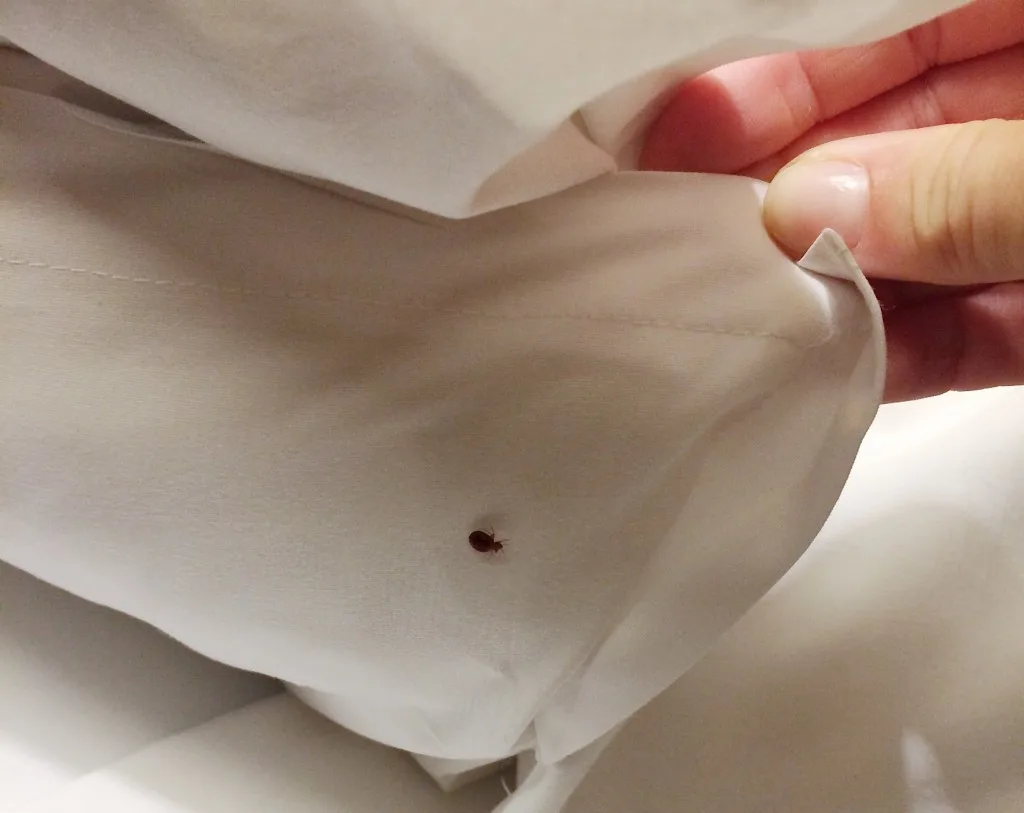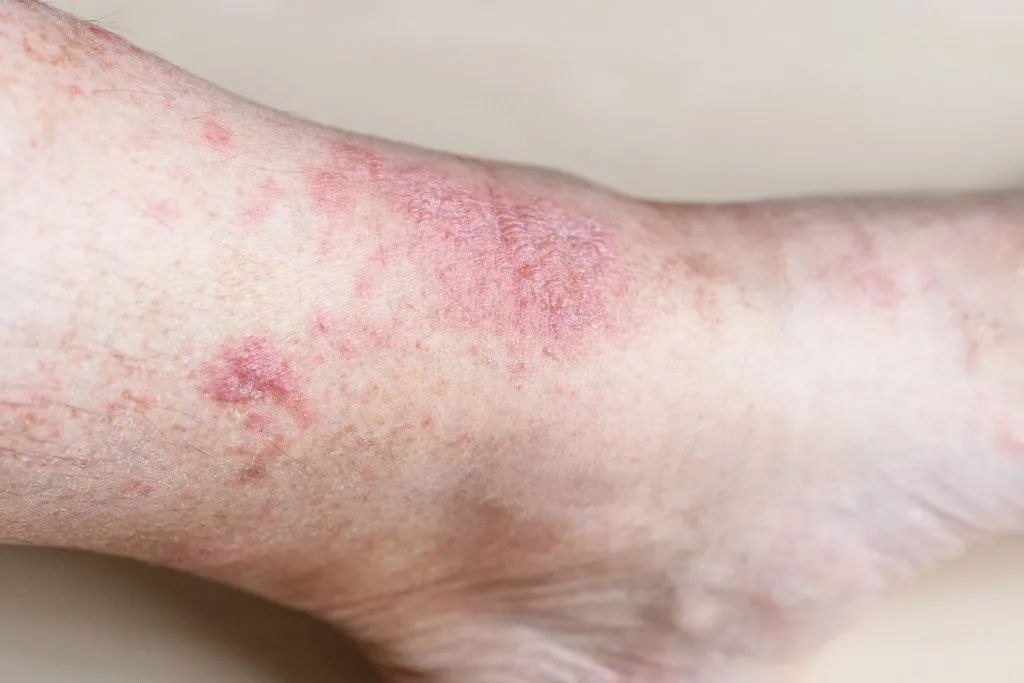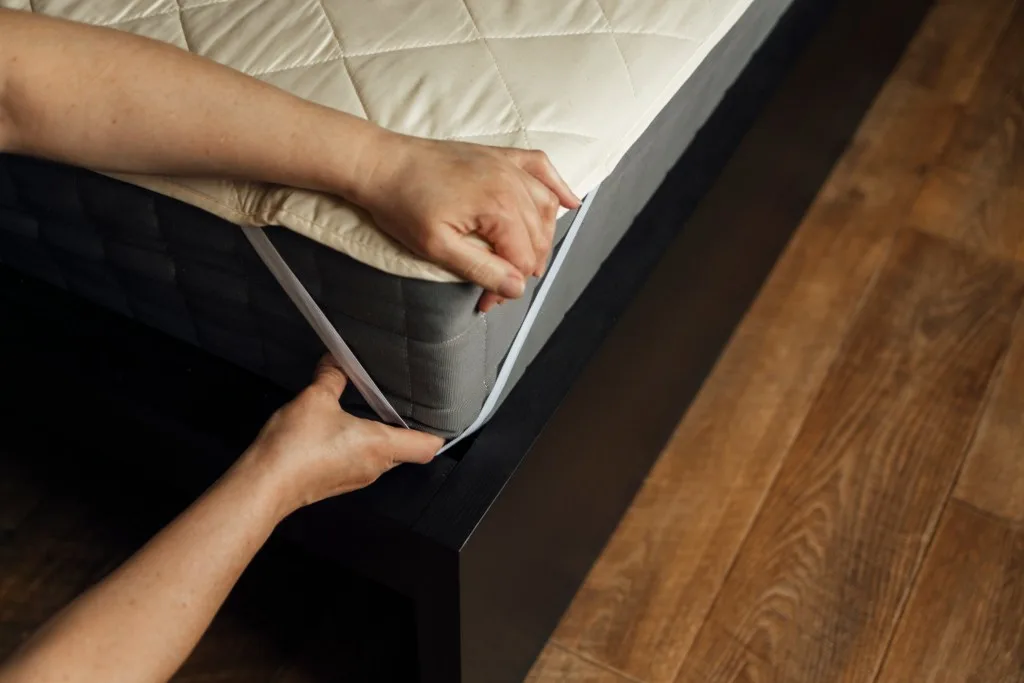Bed bugs may be minuscule creatures but quickly can become a gigantic problem. They’re excellent hitchhikers and can play a mean game of hide and seek.
And no matter how much you’d like to keep these little buggers hidden, it’s better to face your fears and get them out into the open, where you can find them and deal with them.
But where the heck do these things even come from? No matter how much you don’t want to think about bed bugs, you know you need to know. Keep reading to learn where they come from and how to get rid of them.
What Are Bed Bugs?
Bed bugs are small, oval, brownish insects that live on the blood of animals or humans. They’re reddish after feeding and have flat bodies about the size of an apple seed. Although they can move relatively quickly over floors, walls, and ceilings, they can’t fly.
Bed bugs are usually active at night and bite people while they’re sleeping. You can find them in many places, including homes, hotels, and other accommodations.
Bed bugs can cause itching and loss of sleep. However, they don’t spread disease.
What Are the First Signs of Bed Bugs?
Regardless of them not being harmful, they are a huge nuisance. At the first sign of them, you need to work to eliminate them, as they reproduce quickly. So let’s look at some of the earliest signs that you might have bed bugs.
One of the first things you might notice is bites on your skin. These bites are usually red and itchy and can appear in a line or cluster.
If you notice these bites, it’s important to look for other signs. For example, bed bugs often leave behind small dark spots on sheets and mattresses. You might also see shells or eggs, which are small and white. You might even be able to smell a musty odor that comes from the bugs’ sweat glands.

How Does Someone Get Bed Bugs?
You could have the cleanest house in the entire neighborhood and still get an infestation because they thrive off of blood. They’re often found in bedding and the crevices of mattresses and box springs. You might also find them in clothing, and they hide well in small cracks and crevices on or behind almost any surface.
Bed bugs are most often spread through close contact with others, such as sleeping in the same bed or sharing sheets or clothing. They’re like tiny little annoying hitchhikers. After you enjoy an evening or two at a hotel or other rental property with bed bugs, you could easily take them to wherever you go next.
Pro Tip: Keep bed bugs and other creepy crawlies out of your RV with these five solutions.
What Happens If You Get Bed Bugs on You?
In the event that you do have bed bugs, they will find their way onto you. Since most are hiding and reproducing within your mattress and bedding where you sleep, you’ll go to bed with no bite marks but will wake up with them.
These bites usually appear as small, red bumps on the skin. However, they can also be larger. They could even get inflamed or blister. They can appear in a line or cluster, as bed bugs are often found in groups. Some people may also experience an allergic reaction to bed bug bites, which can cause additional swelling and irritation. The bites are usually not painful but can be itchy and uncomfortable.

How Do You Check for Bed Bugs?
If you think you may have bed bugs, we’ve got a few tips for how to check. First, do you have itchy, red marks such as those described above? If so, you could have an infestation.
Next, check your bedding and furniture for signs of the insects. These pests can be difficult to spot, but contrary to popular belief, you can see them with the naked eye.
And there are a few telltale signs of their presence. One is the presence of small, reddish-brown stains on sheets or other fabric. Bed bug feces cause these stains. Another sign of bed bugs is the presence of small eggshells or molted exoskeletons. You’ll find these close to wherever they’re hiding.
Check the tiny seams of your mattress using an unbent metal paper clip. Rub that along the seams of the mattress. If it pulls up reddish-brown debris, it’s a good bet that those are the carcasses of dead bed bugs. And you’re sure to have more waiting to find you at night.
What Instantly Kills Bed Bugs?
High-temperature steam at 212 degrees Fahrenheit kills bed bugs instantly. However, you can’t just stick your entire house in a steam bath and be done with it. There are certain steps to follow to eradicate these nasty little creatures.
You can place many infested items, such as bedding, clothes, and curtains, in a hot wash and then in a clothes dryer on high heat for 30 minutes or more. If you have items you can’t wash, such as shoes or stuffed animals, you can place these in a hot dryer for 30 minutes.
You can also vacuum your entire house thoroughly, preferably with removable vacuum bags that you can throw out. This will help remove any pests that are already present.
If you can’t purchase a new mattress, buy a mattress cover instead, one that seals in the pests you couldn’t kill and prevents new ones from finding a home. Remember that bed bugs can live without feeding for up to a year, so leave that mattress cover on for at least 365 days.
Another common method is extermination by chemicals. Many pesticides are effective, but it’s important to use them carefully, only as directed, and as part of the entire process of eradicating the bugs, including all the steps above.
Contact your local pest control for safe ways to proceed with chemicals.

Does Killing Bed Bugs Attract More?
Killing one doesn’t automatically mean you’ll see hundreds of them scamper across the room. Yes, a female could carry that many eggs, but the more bed bugs you kill, the better.
These pesky little critters may not be able to fly, but they’re great hitchhikers. If you let one go, they may catch a ride on a suitcase or a piece of clothing and make their way to a mate.
Your best bet is to eradicate them the moment you spot them.
Do Bed Bugs Stay on Clothes You’re Wearing?
Yes and no. Technically, they won’t stay on your clothes too long, but they can use them as a transportation mode to get to the food they need — you.
More than likely, if these creepy critters are sticking around on clothes, it’s in a suitcase with other clothes and other bed bugs being transported from wherever you just came from. If you think you may have bed bugs, it’s important to check your clothes carefully and wash them in hot water to kill anything that may be lurking there.
Pro Tip: Cockroaches are just as annoying as bed bugs! If you found a cockroach skittering across your floor, use this guide on How to Easily Get Rid of Cockroaches.
How Do You Get Bed Bugs Out of Hiding?
If you find pests in your home, it’s best to get them out of the dark crevices and into a vacuum bag ASAP. And as you read above, vacuuming is only one step in the long process of getting rid of these resilient pests. However, if you’re diligent and persevere while following all the steps above, you can quickly and effectively eliminate bed bugs from your home.
Have you ever had bed bugs? Share your experience in the comments!
Discover the Best Free Camping Across the USA
To be honest with you, we hate paying for camping. There are so many free campsites in America (with complete privacy).
You should give it a try!
As a matter of fact, these free campsites are yours. Every time you pay federal taxes, you’re contributing to these lands.
Become a FREE CAMPING INSIDER and join the 100,000 campers that love to score the best site!
We’ll send you the 50 Best Free Campsites in the USA (one per state). Access the list by submitting your email below: